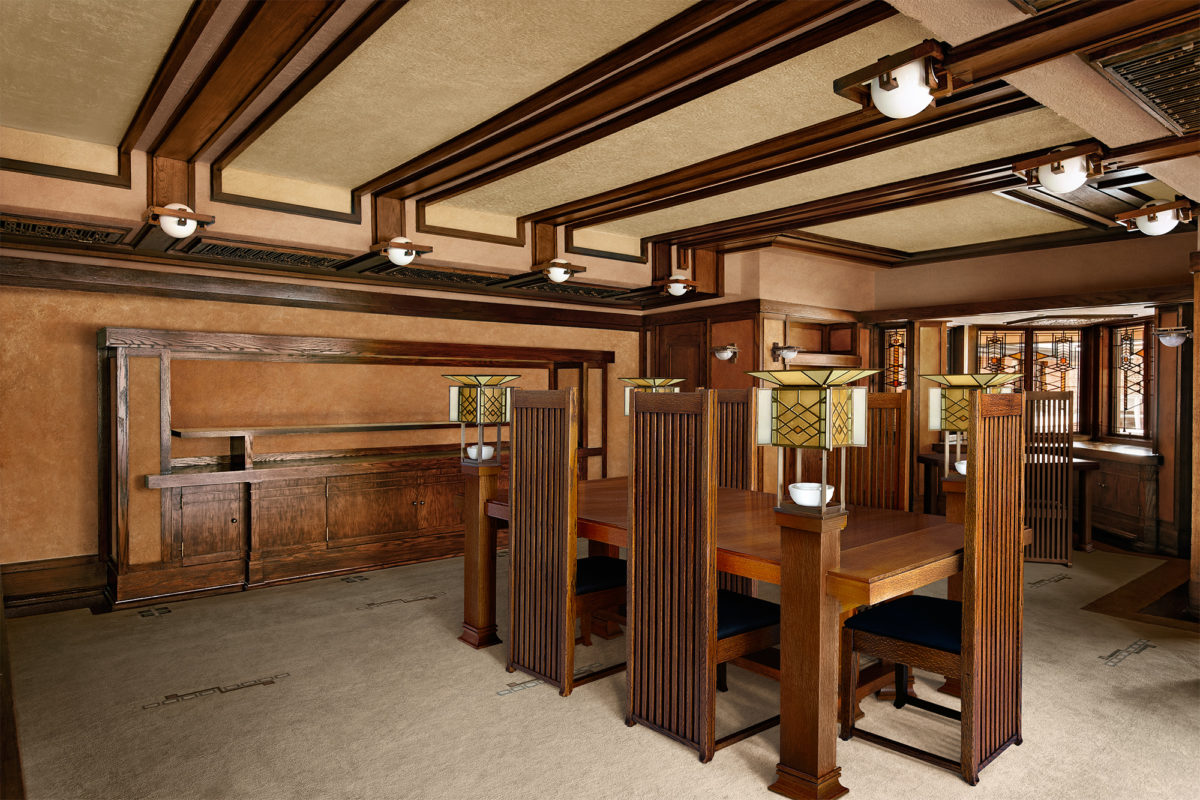
Digital Rendering of the Robie House Dining Room, photograph by James Caulfield
When you consider the word “Organic” what do you think of – food produce and farming, animals and plants? Frank Lloyd Wright used the term “Organic” to describe his architecture.
From his Prairie buildings built in the early 20th Century, to his later works such as Fallingwater (1939) and the Guggenheim Museum (1959), Frank Lloyd Wright’s designs were inspired by principles found in the world of nature. Wright designed each of his buildings as an organic whole. He did not just design the structure of a building; he designed everything, including the furniture, rugs, and light fixtures. By doing so, he was able to create a sense of harmony in his work.
In his 1908 essay titled “In the Cause of Architecture,” Wright identified several features of Organic Design:
- Simplicity should be a guiding principle in design
- Buildings should be designed in harmony with the natural landscape
- Furniture for a building should be designed in harmony with the building
- Colors should be inspired by the world of nature
- Materials should be appreciated for their natural qualities
- The spaces of a building should be opened up
Wright applied these principles to the buildings he designed. For example, Wright’s Prairie houses feature bold horizontal lines that echo the flat landscape of the Midwest prairie. Low, hipped roofs extend out beyond the walls, creating a sense of shelter and protection. Balconies and terraces line the exterior and are filled with plants and shrubs. Wright uses simple building materials, such as brick, wood, and plaster, and a natural color palette of reds, browns, yellows, greys and greens. All of these elements help create a sense of balance and harmony and connect the building to the land upon which it is stands.
While Wright’s building designs evolved over the course of his 70 year career, the principles of organic architecture remained constant in his work.